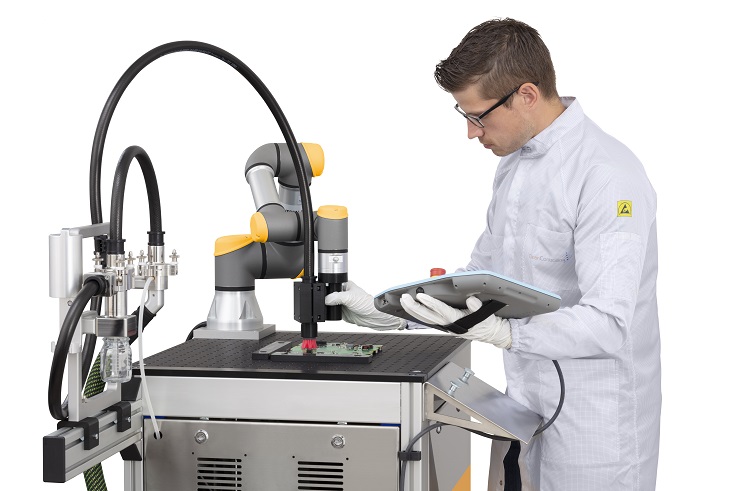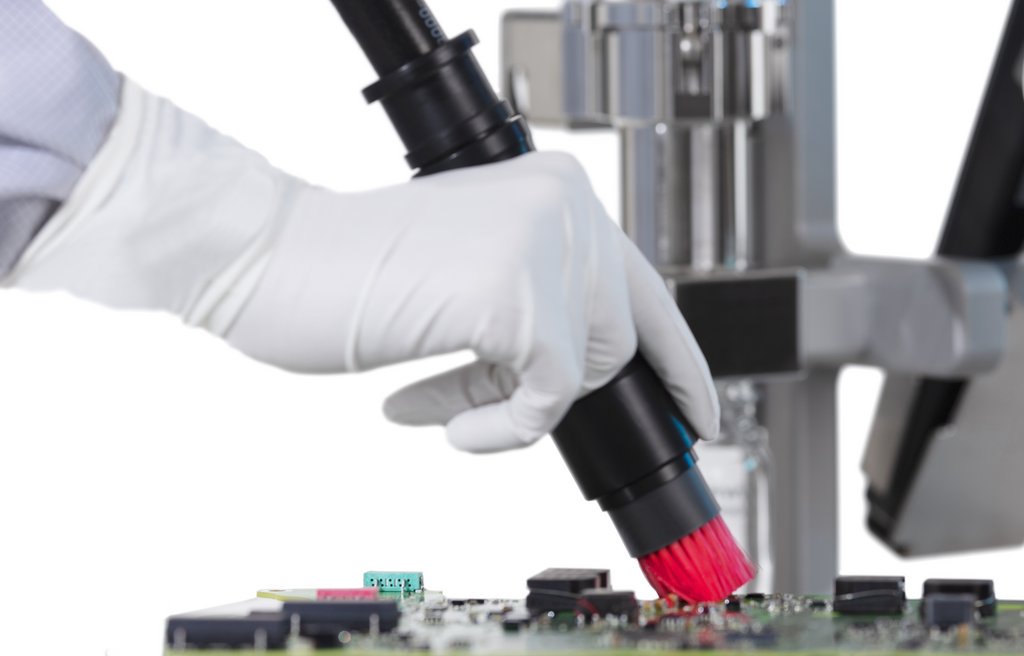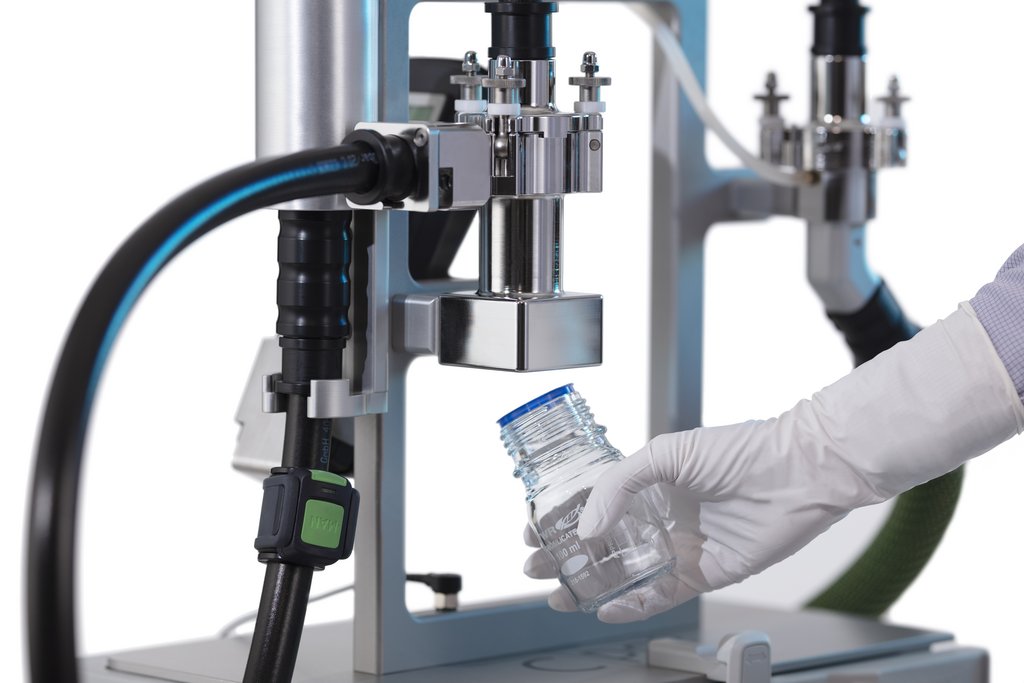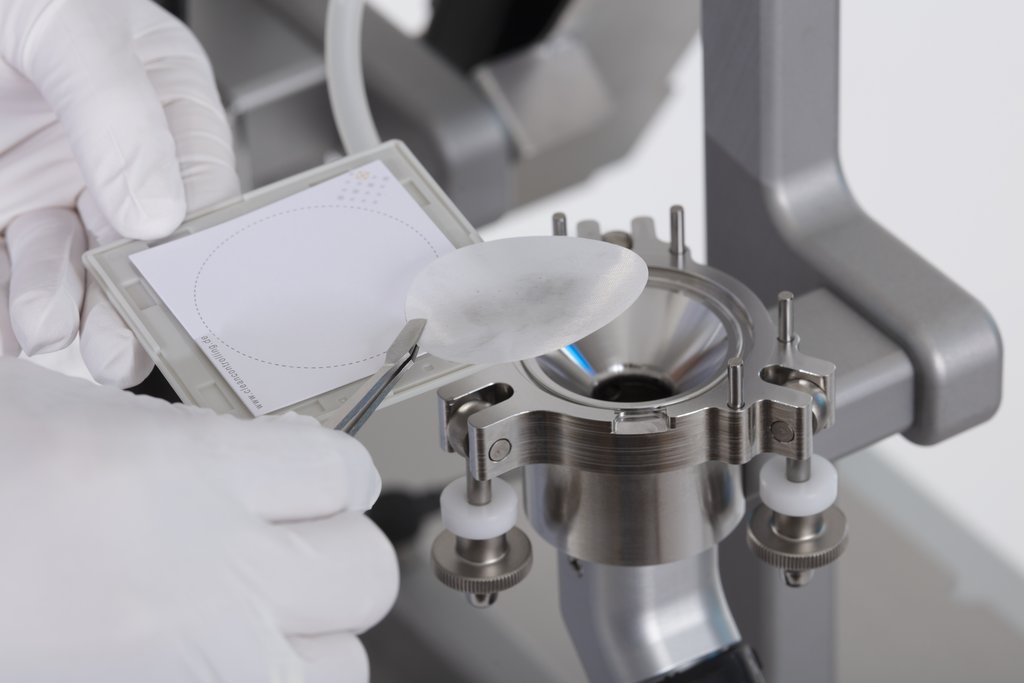Suction extraction to determine technical cleanliness
Dry extraction method for determining the cleanliness of large components, electrical/electronic components (battery and high-voltage systems)
Benefits of suction extraction
Cleanliness tests of oversized components, which are increasingly being used in the field of electromobility, can only be carried out with the usual wet extraction methods with high liquid quantities and sometimes only at great expense. And even if only parts of the component are to be tested, wet extraction processes reach the limits of feasibility. Even in the case of electronic components that are to be reused afterwards, there has been no satisfactory way of determining the particulate contamination up to now. In addition, wet extraction processes, which are usually carried out with extraction equipment in the cleanliness laboratory, are not suitable for carrying out cleanliness tests directly in the process environment, e.g. on assembly equipment, workpiece carriers or on random samples from the production process.
In comparison to wet extraction processes, the advantage is a significantly lower time and logistic expenditure as well as the omission of liquid extraction media. Control areas to be tested separately can be inspected separately precisely and without any special additional effort (e.g. masking).
Suction extraction also forms the ideal basis for robot-guided extraction processes and thus enables absolutely reproducible and economical particle extraction for cleanliness testing of components directly in the process environment during in-line testing.
Procedure
The particles are extacted from the surface by the suction principle by means of a suction nozzle and sucked off and are separated by different methods. The extraction procedure of the suction extraction is determined and qualified by decay measurement analogous to the qualification test described in VDA 19.1 / ISO 16232.
Particle separation via cyclone unit
With particle separation via a cyclone unit, the extracted particles are collected in a clean laboratory bottle. The particles can then be transferred to analysis filters in the cleanliness laboratory by means of secondary extraction and then microscopically evaluated.
Particle separation via filter unit
With the second method, the particles can be sucked off directly via the filter unit and filtered out of the air flow by means of analysis filters. The analysis filter can be microscopically analysed immediately after the suction extraction and possibly subsequent flotation.
In principle, the procedure is similar to the analysis with liquid
- The particles (residual dirt) are collected on an analysis filter and - depending on requirements - characterized by gravimetry, microscopy or elemental analysis.
- The qualification of the extraction procedure determines to a large extent the result of the cleanliness values to be determined.
Suction extraction in action
Newsletter registration




